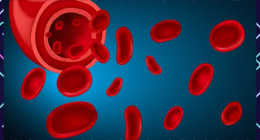 How To Detect Vitiligo? Vitiligo is a chronic skin condition that is marked by the development of patches (white and pale) on the skin. Why does this happen? it mainly happens due to the lack of melanin. There are two different conditions of Vitiligo, namely – segmental vitiligo and non-segmental vitiligo. People who are suffering from any of the auto-immune diseases are most at risk of developing this condition.
How To Detect Vitiligo? Vitiligo is a chronic skin condition that is marked by the development of patches (white and pale) on the skin. Why does this happen? it mainly happens due to the lack of melanin. There are two different conditions of Vitiligo, namely – segmental vitiligo and non-segmental vitiligo. People who are suffering from any of the auto-immune diseases are most at risk of developing this condition.
Vitiligo is a disease where light white patches form on the skin due to lack of melanin pigment. Although vitiligo can affect any skin area, the most common occurrences are prevalent on the face, neck and hands and skin creases. It can sometimes start in the lips, tips of fingers and genital areas also.
This disorder is not lethal or infectious and though considered an autoimmune disorder, can be rarely associated with disorders in other endocrine organs like the thyroid or adrenal glands. However, the appearance of vitiligo can cause stress and low self-esteem. It’s challenging to foresee how this disease will develop. Sometimes the patches stop forming without treatment. In most cases, pigment loss spreads and finally involves most of the skin. In rare cases, the skin gets its colour back.
Dr Sunil Prabhu, MBBS, MD, DNB Dermatologist, Venereologist and Aesthetic Physician, Aster RV Hospital JP Nagar, Bengaluru, shares vitiligo symptoms to look out for.
Signs And Symptoms
The symptoms of vitiligo can appear at any phase of life. The signs include:
[embedded content]
- Loss of skin colour in patches, usually seen first on your face, hands, arms, legs, and feet
- Early paling of your body hair, including hair on the lashes, brows and face if the areas are involved.
- It is primarily asymptomatic and has no symptoms like itching or pain.
- Thyroid and Adrenal gland problems.
Detection Of Vitiligo
A dermatologist will be able to detect vitiligo post skin examination. First, the doctor will look for symptoms associated with other skin conditions, such as other hypopigmentary disorders like common eczemas or healing lesions of psoriasis etc., to rule them out.
- On dark skin, detection of patches is easy. But for lighter-skinned people, the doctor might use a tool called a Wood lamp (which emits ultraviolet light) as there is a minor distinction between the affected skin and natural skin. The device can also differentiate between loss of pigment and reduction in colour.
- Lightened patches appearance and medical history of the patient are adequate for diagnosing vitiligo. However, doctors may recommend additional tests for further confirmation. For example, a skin biopsy will show whether melanocytes are present. Conversely, the non-existence of melanocytes can confirm a vitiligo diagnosis.
- The skin biopsy can also indicate whether the patient is dealing with a skin cancer called hypopigmented cutaneous T-cell lymphoma. However, further testing may be necessary for patients with indicative signs or symptoms to rule out an underlying condition.
- There is no cure for vitiligo, but proper treatment can halt or slow the discolouring process and return some colour to the skin. The procedures aim to create an even skin tone by either restoring colour (repigmentation) or eliminating the remaining pigment (depigmentation).








